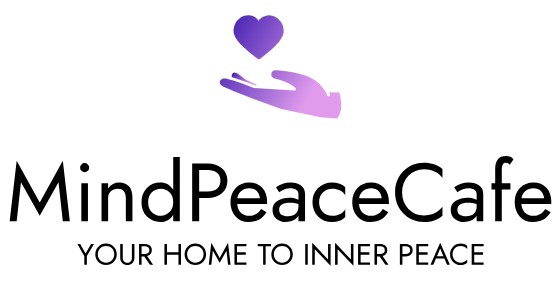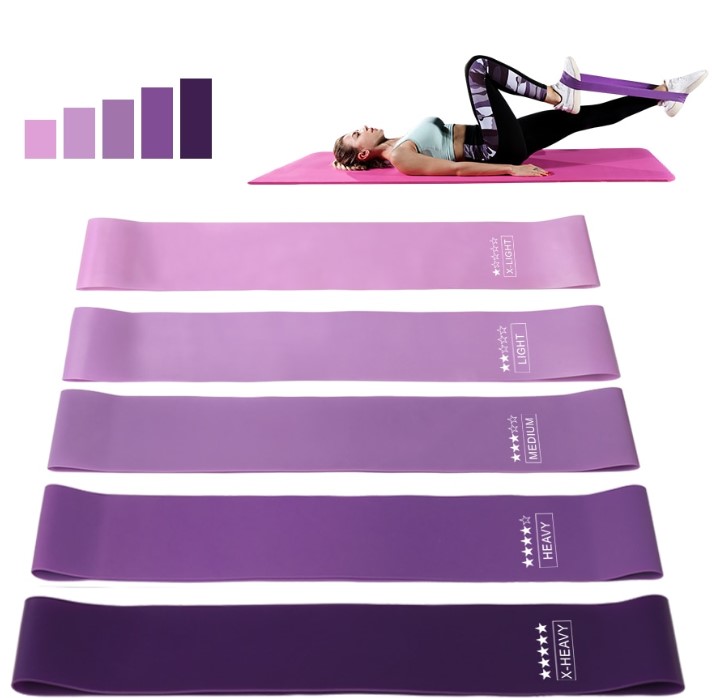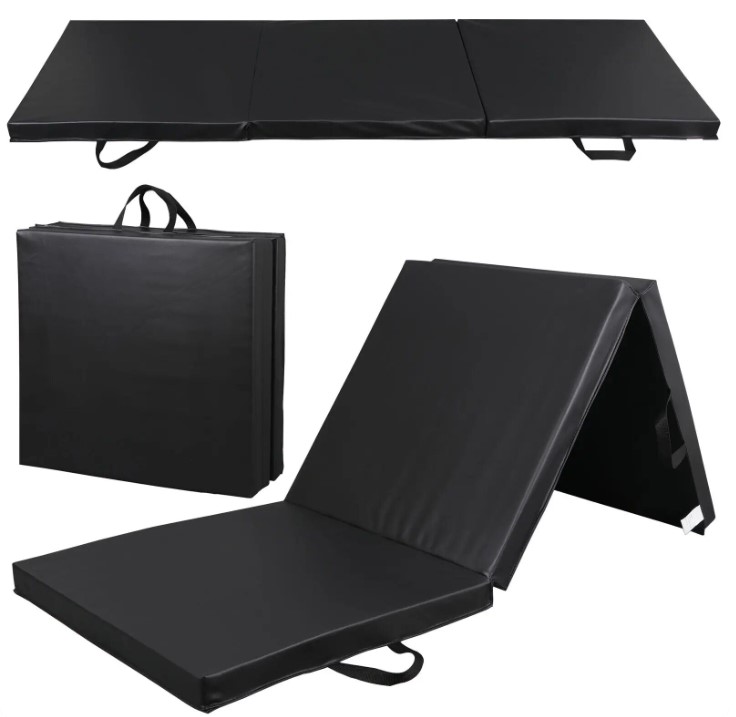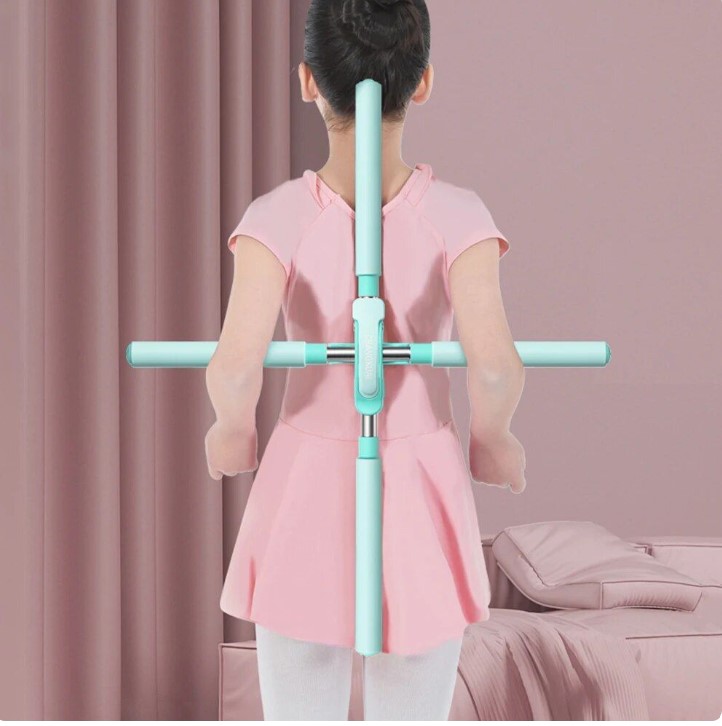Nurturing Serenity Amidst the Corporate Storm

In today’s fast-paced corporate environment, the frenetic demands on executives often leave little room for personal well-being. Yet, this is precisely why the adoption of guided meditation has become increasingly prevalent within boardrooms and C-suites. ‘Unwind Live: Guided Meditation for Busy Executives’ offers an insightful exploration of how high-powered professionals can harness the transformative benefits of mindfulness, focus, and inner balance to thrive in their demanding roles. This guide doesn’t just scratch the surface; it delves into practical strategies, advanced techniques, and seamless integration methods tailored specifically to the executive lifestyle, revealing the indispensable value of meditation in optimizing performance and enhancing resilience within the corporate world.
1. Introduction to Guided Meditation
Guided meditation has emerged as a valuable tool for professionals seeking reprieve from the pressures of today’s business landscape. This form of meditation, distinct from traditional practices, provides individuals with a structured framework, often led by an instructor or through recorded sessions, making it an accessible and effective option even for busy executives. The benefits of guided meditation for these high-powered individuals are far-reaching, encompassing improved focus, stress reduction, and overall mental well-being, all crucial components for navigating the demanding world of corporate leadership.
Busy executives often find themselves entrenched in an environment where the need for mental clarity and emotional fortitude is paramount. With this in mind, understanding the basics of guided meditation becomes an essential asset. This article aims to delve into the distinct qualities of guided meditation, shedding light on its practicality and adaptability within the hectic schedules of corporate leaders. By uncovering the core principles and advantages inherent to guided meditation, individuals can refine their approach to personal well-being, integrating mindfulness practices seamlessly into their professional lives.
As the business landscape continues to evolve, the significance of inner balance and mental resilience for executives becomes increasingly evident. By familiarizing themselves with guided meditation, busy professionals gain access to a holistic approach that not only enhances their cognitive abilities and focus but also equips them with the emotional agility required to tackle the rigors of high-level decision-making and leadership.
What is Guided Meditation?
Guided meditation, in its essence, offers individuals a structured approach to meditation, often led by an instructor or through recorded sessions. The key distinction between guided meditation and traditional forms lies in the guidance provided throughout the practice. While conventional meditative techniques involve self-navigation through the meditative process, guided meditation offers a supportive framework, incorporating verbal cues, imagery, and other sensory prompts to facilitate a deeper, more focused experience.
Compared to traditional meditation, guided meditation presents a more accessible entry point for beginners and busy professionals. Its guided nature eases the apprehension often associated with starting a meditation practice, as individuals are directed through the process, alleviating the pressure to ‘get it right’ from the outset. Moreover, the structured format aligns well with the fast-paced lifestyles of executives, as it allows them to seamlessly incorporate meditation into their routines without the need for extensive prior experience or training.
While traditional meditation fosters independence and introspection, guided meditation enhances these qualities by introducing an external influence, fostering a sense of community even in solitary practice. By understanding the unique characteristics of guided meditation and its divergence from traditional methods, individuals can better appreciate how this form of meditation serves as an invaluable tool for achieving mental clarity, focus, and overall well-being in the modern professional landscape.
Benefits of Guided Meditation for Busy Executives
The benefits of guided meditation for busy executives are multifaceted, catering to the unique demands and challenges they encounter in their professional lives. As busy schedules and high-pressure work environments often lead to mental fatigue, stress, and reduced focus, guided meditation offers a valuable respite. By incorporating regular guided meditation sessions into their routines, executives can effectively enhance their ability to concentrate, leading to improved productivity and decision-making skills amidst chaotic workdays.
Furthermore, stress reduction is a pivotal advantage of guided meditation for busy professionals. The structured and supportive nature of guided sessions provides executives with a dedicated opportunity to disconnect from their daily pressures, fostering a sense of mental rejuvenation and emotional resilience. In doing so, executives can better navigate the complexities of their roles, mitigating burnout and bolstering overall well-being.
In addition to promoting focus and stress reduction, guided meditation also equips busy executives with enhanced mental well-being. Through consistent practice, individuals often experience heightened self-awareness, greater emotional regulation, and an improved capacity to manage the demands of leadership. These cumulative benefits not only fortify the individual executive but also contribute to a more harmonious and productive organizational environment, making guided meditation a cornerstone of holistic well-being within the corporate sphere.
2. Getting Started with Guided Meditation

For busy executives embarking on a guided meditation journey, establishing an optimal environment serves as the foundational step. Creating a calm and focused space at home or within the workplace is pivotal for cultivating a conducive setting. This might involve designating a quiet area, integrating soothing elements such as lighting or natural decor, and minimizing potential distractions. By curating a tranquil space, executives can enhance the efficacy of their meditation practice, allowing for deeper immersion and mental rejuvenation.
Utilizing guided meditation apps tailored to the needs of busy professionals is another practical entry point. With a multitude of applications available, executives can explore options featuring varied session lengths, themes, and instructor styles, providing flexibility to align with their schedules and preferences. These apps often offer guidance for beginners and advanced practitioners alike, thereby catering to a broad spectrum of needs within the executive demographic.
Scheduling and incorporating guided meditation sessions into their daily routine is essential for busy executives to derive maximum benefit from this practice. By strategically integrating sessions into pockets of quiet time, such as the beginning or end of the day, executives can effectively anchor their meditation practice within their schedules. Additionally, structuring these sessions as non-negotiable appointments fosters consistency, facilitating the gradual integration of guided meditation into their busy lives, ultimately reaping its profound benefits.
Creating a Calm and Focused Environment
Creating a conducive environment for guided meditation is essential for maximizing the effectiveness of the practice, whether at home or in the workplace. The first step in setting up the right space involves identifying an area that is free from distractions and noise. This space can be a dedicated meditation corner, a tranquil room, or any location that enables an individual to escape the commotion of daily life, fostering a sense of peace and inner calm. Additionally, integrating elements such as comfortable seating, soft lighting, and soothing décor can further enhance the atmosphere, promoting relaxation and focused introspection.
In a home setting, individuals can consider incorporating nature-inspired elements or natural materials, which have been shown to contribute to a serene ambiance and evoke feelings of tranquility. For those incorporating meditation into their workplace routine, identifying a quiet space or utilizing noise-cancelling headphones can mitigate external disruptions, allowing for a more immersive meditation experience. By tailoring the environment to their preferences, individuals can customize their meditation space to evoke a sense of tranquility and aid in the release of stress and tension.
Furthermore, leveraging aromatherapy through the use of essential oils or scented candles can elevate the serenity of the meditation space. Selecting fragrances like lavender, eucalyptus, or citrus can evoke calmness and clarity, enhancing the overall meditative experience. By curating a tranquil environment, individuals can optimize their guided meditation sessions, nurturing a space that supports mental rejuvenation and emotional well-being.
Utilizing Guided Meditation Apps
In the digital age, the availability of meditation apps has revolutionized the accessibility of guided meditation for busy professionals. These applications offer a diverse array of guided sessions, catering to various preferences, expertise levels, and time constraints. For executives seeking to integrate mindfulness into their demanding schedules, identifying the right meditation app is crucial. Among the top recommendations is an app that provides sessions tailored to the specific needs of busy professionals, offering flexibility in session length, themes, and meditation styles.
Furthermore, the best meditation apps often feature user-friendly interfaces, clear navigation, and customizable options, ensuring a seamless user experience. Some apps provide guided meditation tracks designed specifically for high-stress environments, leadership development, or enhancing focus and productivity, aligning with the unique requirements of busy executives. Additionally, the availability of offline access and progress tracking can further enhance the appeal of these apps, allowing professionals to engage in meditation sessions on-the-go and monitor their growth over time.
Ultimately, the utilization of guided meditation apps empowers busy professionals to seamlessly integrate mindfulness practices into their daily routines, fostering mental well-being and resilience amidst the rigors of their roles. By leveraging these innovative tools, executives can embark on a guided meditation journey that aligns with their schedules and caters to their individual needs, ultimately reaping the benefits of improved focus, reduced stress, and heightened cognitive abilities.
Scheduling and Incorporating Guided Meditation Sessions
Integrating guided meditation into the daily routine of busy executives requires strategic planning and commitment to ensure its efficacy. One approach involves scheduling meditation sessions during dedicated pockets of time, such as in the morning before the workday commences or in the evening to unwind and transition into a restful state. By framing meditation as a fixed component of their daily schedule, executives can prioritize this practice, reaping its benefits consistently. Additionally, identifying opportune moments during the workday, such as during breaks or transition periods, enables professionals to seamlessly incorporate brief meditation sessions, promoting mental rejuvenation and sustained focus.
Moreover, executives can leverage calendar reminders or task management tools to schedule their meditation sessions, treating these appointments with the same level of importance as their professional commitments. Establishing a routine fosters consistency and reinforces the integration of guided meditation into their daily lives. By approaching meditation as an indispensable aspect of their well-being, executives can fortify their mental resilience and optimize their cognitive performance, ultimately enhancing their capacity to navigate the challenges of their roles.
Furthermore, incorporating meditation into a busy executive’s routine involves aligning the practice with their individual preferences and lifestyle. Some may find that engaging in shorter, more frequent sessions throughout the day better suits their rhythm, while others may benefit from longer, immersive meditation experiences during specific intervals. Tailoring the scheduling and duration of sessions to align with individual needs ensures that executives can derive maximal benefit from their guided meditation practice, fostering sustained well-being and focus amidst their demanding schedules.
3. Benefits of Meditation for Executive Well-being
Meditation plays a pivotal role in fortifying the well-being of executives inhabiting high-pressure professional landscapes. Specifically tailored to address the unique demands of the corporate world, meditation offers an array of benefits that contribute to executive well-being. One of the primary advantages lies in stress reduction and mental clarity. Through regular meditation practice, executives can cultivate heightened resilience, emotional stability, and a sharpened focus essential for navigating the challenges of leadership roles within dynamic organizations.
In addition to stress reduction, meditation serves as an invaluable tool for enhancing decision-making and sustaining focus amid distractions. By fostering cognitive agility, mental acuity, and emotional intelligence, meditation equips executives with the cognitive fortitude necessary to confront multifaceted problems and make well-informed decisions. This heightened mental acumen and ability to maintain focus can significantly bolster an executive’s efficacy within their professional sphere.
Furthermore, meditation augments executive well-being by facilitating a deeper sense of self-awareness and emotional regulation. These qualities, cultivated through consistent meditation, enable executives to navigate interpersonal dynamics, manage conflicts, and maintain a balanced perspective amidst the complexities of their roles. Ultimately, the cumulative benefits of meditation contribute to the holistic well-being of executives, fostering mental resilience, emotional equilibrium, and an optimized cognitive capacity crucial for success in today’s demanding corporate landscape.
Stress Reduction and Mental Clarity
Guided meditation serves as a powerful instrument in fostering stress reduction, mental clarity, and emotional resilience, especially crucial for executives wrestling with high-pressure environments. By engaging in guided meditation, individuals can systematically alleviate the grip of stress and mental fatigue, restoring a sense of equilibrium essential for effective leadership. Through guided sessions, executives learn to channel their focus inward, transcending the chaos of the external environment to achieve a state of calm reflection. This practice not only mitigates the immediate impact of stress but also cultivates enduring emotional resilience, enabling executives to navigate challenges with heightened composure and adaptability.
Moreover, guided meditation equips executives with the cognitive acuity necessary for sustaining mental clarity amidst demanding roles. The structured guidance inherent to guided meditation supports individuals in honing their ability to maintain focus, make informed decisions, and navigate complexities with enhanced acumen. Furthermore, this practice augments cognitive resilience, enabling executives to confront challenges with clarity and precision, ultimately fortifying their capacity to lead effectively within high-stakes environments.
In addition to stress reduction and mental clarity, guided meditation nurtures emotional resilience, fostering the skills required to navigate high-pressure scenarios with equilibrium. The practice facilitates the development of emotional intelligence and regulatory capacities, empowering executives to manage both internal and external pressures with poise. By honing these qualities, guided meditation emerges as an indispensable asset, positioning executives to navigate professional challenges with enhanced emotional equilibrium and cognitive dexterity.
Enhancing Decision-Making and Focus
Meditation serves as a transformative practice in enhancing cognitive function, sharpening decision-making skills, and fortifying the ability to maintain focus in the face of distractions, endowing professionals with a competitive edge in the professional sphere. Through consistent meditation, individuals can refine their cognitive acuity, heightening their capacity for analytical thinking, problem-solving, and strategic decision-making. This heightened cognitive function underlies the ability to navigate complex challenges and envision innovative solutions, positioning professionals to thrive in dynamic and competitive environments.
Furthermore, meditation supports the cultivation of sustained focus amidst multifaceted demands. By training the mind to anchor its attention, individuals develop the resilience necessary to persist in the face of distractions, a skill indispensable within the professional landscape. The practice of sustained focus not only enhances productivity but also contributes to the quality of work, enabling professionals to delve into tasks with heightened nuance and depth. This capacity for sustained, unwavering attention provides professionals with a unique advantage in managing high-stakes projects and sustaining impactful contributions within the organizational sphere.
In addition to bolstering decision-making and focus, meditation heightens professionals’ adaptability and capacity for agile thinking. The practice fosters mental flexibility, enabling individuals to embrace change, navigate uncertainty, and respond with clarity amidst evolving contexts. By sharpening these cognitive attributes, meditation offers a transformative advantage, empowering professionals to approach challenges with inventive solutions and a nuanced, adaptable perspective.
4. Advanced Meditation Techniques for Busy Professionals
Advanced meditation techniques offer busy professionals an avenue to deepen and enrich their mindfulness practice, providing a transformative experience tailored to the demands of executive life. One such approach involves the incorporation of mindfulness practices specifically designed to address the challenges faced by busy professionals. Mindfulness techniques for multitasking, stress management, and cultivating mental resilience enable executives to navigate complex work environments with enhanced acumen and emotional equilibrium. These techniques promote mental clarity, emotional intelligence, and the adaptability necessary to thrive in high-pressure scenarios, ultimately fortifying executives’ capacity to lead with composure and insight.
Moreover, advanced meditation methods often emphasize the cultivation of resilience and adaptive coping mechanisms tailored to the unique stressors encountered in the executive sphere. These methods incorporate contemplative practices aimed at fostering emotional equilibrium, empowering professionals to manage adversities, setbacks, and high-stress scenarios with heightened fortitude. By refining these qualities, executives can confront challenges with poise and ingenuity, positioning them to lead with clarity and resilience in the face of complex organizational dynamics.
Additionally, advanced meditation practices delve into the intricacies of contemplative traditions, offering executives an opportunity to explore nuanced techniques such as visualization, deep breathing exercises, and somatic awareness. These practices foster a deeper connection to the self, promoting emotional regulation and cognitive acuity, while also serving as invaluable tools for mitigating stress and recalibrating amidst the demands of executive roles.
Mindfulness Practices for Executives
Mindfulness practices offer executives a structured approach to address the specific challenges encountered in high-pressure professional environments, catering to the complexities of multitasking and information overload. Executives often grapple with the need to juggle numerous responsibilities simultaneously, leading to mental fatigue and diminished clarity. Mindfulness techniques provide a strategic framework to navigate these challenges, fostering a deliberate, present-moment awareness that enables professionals to infuse intention and focus into their tasks. By honing their ability to engage with singular attention, executives bolster their efficiency, decision-making, and resilience, mitigating the impact of multitasking and enhancing the quality of their contributions within the organizational sphere.
Furthermore, mindfulness practices serve as a pivotal asset in managing information overload, a prevalent concern in the contemporary professional landscape. By cultivating the skill of present-moment awareness, executives are empowered to discern the critical from the peripheral, hone their capacity for discernment, and preserve mental clarity amidst voluminous information. These practices not only foster cognitive acuity and adaptive thinking but also enable executives to approach information with a balanced perspective, navigating complexities with enhanced insight and strategic foresight.
In addition to addressing multitasking and information overload, mindfulness practices facilitate the development of emotional regulation and resilience, providing executives with a toolset to confront high-pressure scenarios with composure and efficacy. By embracing these practices, professionals fortify their cognitive and emotional agility, positioning themselves to navigate the intricacies of executive roles with nuanced clarity and adaptability.
Cultivating Resilience through Meditation
Cultivating resilience through meditation empowers executives to develop adaptive coping mechanisms, emotional intelligence, and fortitude in the face of their unique stressors. Advanced meditation practices offer a deliberate and structured approach to address the multifaceted challenges encountered within the executive realm, fostering a profound sense of resilience and emotional equilibrium. By integrating these practices into their routine, executives enhance their capacity to navigate uncertainties, setbacks, and high-pressure scenarios with composure and clarity, ultimately fortifying their leadership acumen and well-being.
These advanced meditation techniques, tailored to executives’ specific stressors, emphasize the development of emotional intelligence and adaptive coping strategies, serving as an invaluable asset in managing the complexities of leadership roles. Executives hone their ability to remain composed amidst volatility, discerning effective responses to challenges, and fostering a balanced perspective essential for sustained leadership efficacy. Furthermore, these practices enable professionals to leverage heightened emotional intelligence in managing interpersonal dynamics, fostering collaborative, empathetic leadership strategies that yield lasting organizational impact.
Moreover, advanced meditation practices offer executives tools for adaptive coping, promoting mental flexibility, and the capacity to respond resiliently to change and adversity. By imbuing these practices, executives bolster their emotional agility, curating a strategic reserve for navigating high-pressure environments with fortitude and adaptability. Ultimately, the cultivation of resilience through meditation empowers executives to confront challenges with equanimity, insight, and sustained well-being, positioning them for enduring success in their professional endeavors.
5. Integrating Meditation into the Executive Lifestyle
Integrating meditation into the executive lifestyle necessitates practical strategies tailored to the demanding schedules of high-level professionals. One approach involves the strategic identification of optimal time slots for meditation within the day, such as early morning or before bedtime, capitalizing on moments that are conducive to introspection and mental rejuvenation. By seamlessly integrating these practices into their routine, executives can derive maximal benefit, setting a tone of rejuvenation and focus that permeates throughout their professional activities.
Moreover, executives can leverage mindfulness in transitional periods during the workday, such as between meetings or before complex tasks, to recalibrate and gather their focus. By framing these moments as opportunities for brief, targeted meditation, professionals can infuse their activities with intention and clarity, ultimately bolstering their productivity and decision-making capacity. Additionally, integrating meditation practices into the workplace culture can foster individual and collective well-being, engendering a harmonious and focused environment conducive to sustained productivity.
Furthermore, tailoring meditation strategies to align with the executive lifestyle involves promoting intentional breaks and dedicated spaces for mindfulness in the workplace. By cultivating a workplace culture that values and accommodates meditation practices, executives and their teams can collectively benefit from an environment that prioritizes mental well-being and cognitive acuity, ultimately enhancing organizational performance and resilience.
Meditation Retreats and Networking Opportunities
Meditation retreats and networking opportunities provide executives with a transformative space for personal growth, leadership development, and fostering professional connections. These events offer a platform for professionals to disengage from their daily rigors, cultivating introspection and fortifying their leadership acumen. In addition, they facilitate meaningful connections, collaborative opportunities, and alliances with like-minded professionals and thought leaders in various industries. The integration of mindfulness practices into networking events fosters an environment conducive to authentic, meaningful interactions, enhancing the depth of professional connections. Moreover, through engagement in these settings, executives enhance their resilience, emotional intelligence, and adaptive coping strategies essential for navigating the challenges of leadership roles. Executives can leverage these contemplative practices for sustained well-being and professional success.
Creating a Culture of Well-being in the Workplace
Promoting a culture of well-being in the workplace is pivotal for executives looking to foster an environment that values mental health, work-life balance, and overall employee wellness. Executives can advocate for workplace well-being by integrating meditation initiatives and support programs, laying the foundation for sustained personal and professional growth. By offering access to mindfulness practices, executives demonstrate a commitment to mental health and well-being, fostering an environment where employees can thrive holistically. Furthermore, executives can introduce meditation programs tailored to the unique stressors encountered in the workplace, enhancing emotional resilience and focus amidst professional pressures. These initiatives underscore a commitment to promoting mental clarity, stress reduction, and emotional intelligence among employees, ultimately contributing to a productive and harmonious work environment. In addition to meditation programs, executives can introduce policies that prioritize work-life balance, flexibility, and mental health resources. By cultivating an environment that values holistic well-being, executives foster a culture that prioritizes employee mental health and overall job satisfaction. Well-being initiatives create a supportive and nurturing environment, empowering employees to navigate work demands with a balanced perspective and emotional equilibrium.
How can executives find time for meditation given their busy schedules?
Executives can integrate meditation into their daily routine by identifying pockets of time, such as early mornings or before bedtime, to establish a meditation practice. It’s also helpful to explore brief moments during the workday, such as transitions between tasks, as opportunities for targeted meditation to recalibrate and gather focus.
What are the specific benefits of mindfulness practices for busy professionals?
Mindfulness practices offer busy professionals tools for managing stress, enhancing mental clarity, and developing adaptability—all crucial assets in high-pressure work environments. Additionally, mindfulness equips professionals to navigate information overload and multitasking by fostering present-moment awareness and discernment.
How can executives promote a culture of well-being in the workplace?
Executives can cultivate a well-being culture by integrating meditation initiatives, introducing policies that prioritize work-life balance, and offering mental health resources. These efforts demonstrate a commitment to holistic well-being and contribute to a supportive and nurturing work environment.




